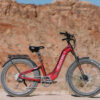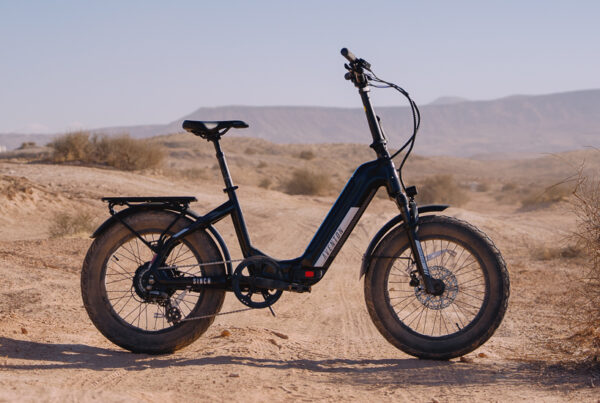Our first evaluation of the Trek FX+ 2 was our Circuit Test, which you can read more about from the graphic above. This allowed us to get a feel for the bike’s HyDrive 250W rear hub motor and test out the performance of its cadence sensor.
With no motor assistance, the FX+ 2’s slight frame and minimalistic character immediately came to the forefront. Many of the e-bikes I have tested are huge and heavy, a fact that becomes magnified quickly when the motor isn’t doing anything to pull its weight. For this reason, the PAS 0 lap in our Circuit Test can feel dreadful. With the FX+ 2, however, it became a relative breeze. The bike’s 40-lb frame is comparable in weight to a non-electric model on the heavier side, so completing that lap did still take some work, but I was pleasantly surprised by how much energy I had left as I rounded the last bend.
I noticed through my following three laps that the bike’s small, 250W motor really reinforces its intention of being a bike first and an e-bike second. To compare again with other e-bikes I have tried, many more powerful rear-hub motors create the strong feeling of being pushed from behind. This feeling exists on the FX+ 2, but only lightly and when the motor first engages after starting from a slow coast or a stop. Once up to speed, the bike’s torque sensor and motor work in tandem to provide a remarkably natural feel that I can only compare to a mid-drive motor. The motor engagement is subtle and sometimes difficult to perceive, until you realize you just climbed a hill you normally wouldn’t have made it to the top of. This contrasts sharply with many more powerful rear-hub motors which can very obviously feel like they fully take over.
The FX+ 2 stood out from many other e-bikes I have tested through another way as well: its PAS system. It is extremely common to see pedal assist systems with five levels of input. It is also common for at least one of these levels to feel relatively ineffective. The FX+ 2 trims the fat here by focusing on just three PAS settings, all of which are functional, varied, and tuned intuitively.
The graphic above illustrates this point perfectly. It’s relatively rare that we see such a linear progression between settings on an e-bike, and while it makes sense for some to deviate from the pattern, it’s something we’d love to see more often. To boil down what the data and the linear graph means: when you increase the PAS level on the FX+ 2, you get just the amount of power boost from the motor that you would expect.
If I’m being honest, this isn’t surprising. Trek has been making bikes since the 70s and e-bikes since the early 2000s, plus they’re a massive company with plenty of funding to apply to R&D. They have the customer base to encourage them to do things right, as well as the experience and the development team to pull it off. You can see more evidence of this in our other Trek e-bike reviews. For now, let’s get back to our Trek FX+ 2 review.
Due to its dependence on rider input, the FX+ 2 is capable of high speeds even at low PAS settings. As a Class 1 e-bike, this means the motor will contribute up to 20 mph. I was able to reach speeds close to this limit in PAS 1 when putting in some work, and this just became easier in PAS 2 and 3. Here at EBR, we often say that some e-bikes can make you feel superhuman, and I think this definitely applies to the FX+ 2 in PAS 3.
The FX+2’s motor performance can be tweaked a bit by pairing the bike with the Hyena Rider Assistant app. We’ll look at that a bit more in-depth later, but for now, just know that the motor output of the three PAS settings can be adjusted as long as the bike is stopped. PAS 1 has a range of 1-33% of the motor’s total (nominal) power. PAS 2 can be set anywhere between 34-67% of the total output, and PAS 3 finishes out the range from 68-100%. I played around with this a bit, and the difference is relatively subtle on the already understated motor, but it can make a difference of a few miles per hour.
Source link








